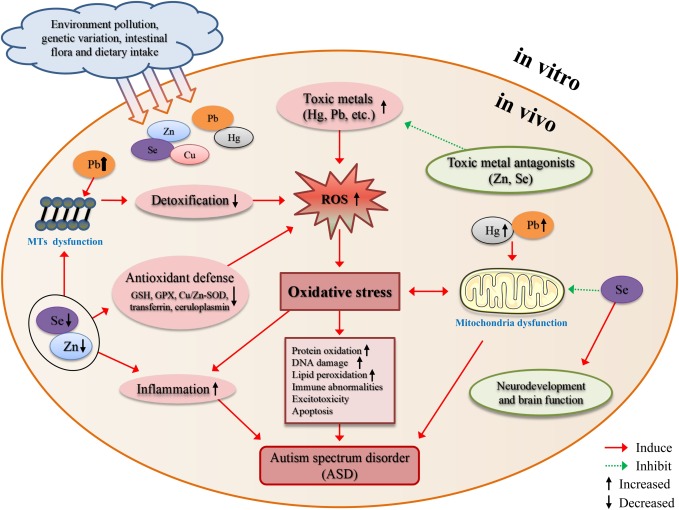
Copper, Oxidative Stress, and Autism – The Hidden Chemistry Behind Behavior
Copper and zinc are essential trace minerals, but in autism their balance is often disturbed. Too much copper and too little zinc can amplify oxidative stress, strain the brain’s antioxidant defenses, and interfere with neurotransmitter balance.
This imbalance doesn’t happen in isolation—it’s tied to the same methylation and mitochondrial pathways that regulate energy, detox, and mood.
Why Copper Matters
Copper helps enzymes that generate energy and form connective tissue, but when it rises above normal, it becomes a potent oxidizer. Excess copper reacts easily with oxygen, creating reactive oxygen species (ROS)—tiny sparks that damage cell membranes and proteins if not neutralized in time.
The body depends on metallothionein, a zinc-dependent protein, to bind and regulate copper safely. When zinc is low or methylation is sluggish, metallothionein production drops. The result is a rise in free copper, oxidative stress, and over-excited brain chemistry.
Oxidative Stress and Behavior
Elevated copper and low zinc can shift the brain’s chemistry toward excessive stimulation. Copper promotes conversion of dopamine into norepinephrine, increasing anxiety, irritability, and sensory sensitivity.
Meanwhile, oxidative stress from excess copper depletes glutathione, catalase, and superoxide dismutase—the same antioxidants that protect mitochondria and neurons. Over time, the brain’s “cooling system” wears down, leading to agitation, poor sleep, and cognitive fatigue.
The Estrogen and Environment Connection
Estrogen naturally raises copper levels, which may partly explain the higher incidence of copper overload in pregnancy and postpartum states. Environmental factors—processed foods, pesticides, and certain medications—can compound the imbalance by taxing liver detoxification.
When maternal zinc is low during pregnancy, fetal copper levels may rise, predisposing children to oxidative stress and methylation problems later in life. Addressing zinc status before and after pregnancy helps normalize copper metabolism and lower risk.
Methylation and the Copper–Zinc Axis
Dr. William Walsh’s research showed that many children with autism who have high copper are also undermethylated. Poor methylation weakens both antioxidant defenses and metallothionein synthesis, reducing the body’s ability to control copper.
When methylation is restored—through adequate zinc, B6, SAMe or methionine as indicated, and improved gut and liver function—copper levels often normalize naturally. The oxidative stress declines, neurotransmitters stabilize, and emotional regulation improves.
Nutritional and Lifestyle Support
Restoring copper-zinc balance is about improving the body’s natural regulation rather than forcing levels down abruptly.
Core strategies include:
-
Ensuring adequate zinc, magnesium, and B6 to activate metallothionein.
-
Supporting liver detox in autism with glutathione, NAC, and sulfur-rich foods (onions, garlic, eggs, cruciferous vegetables).
-
Following a low-glycemic Mediterranean-style diet with high vegetable variety and minimal processed additives.
-
Encouraging hydration and gentle alkalinity (mineral water, leafy greens) to aid copper clearance.
Putting It Together
Copper overload, oxidative stress, and undermethylation form a biochemical triangle that explains many of the behavioral and emotional symptoms seen in autism. Balancing these systems restores not just lab numbers but overall stability—better sleep, calmer mood, and improved learning readiness.
